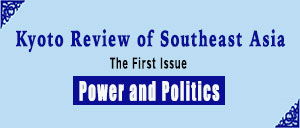
Bank Indonesia’s Independence in Political Turbulence
Independensi Bank Indonesia dalam Kemelut Politik
M. Dawam Rahardjo
Jakarta / Pustaka Cidesindo / 2000
The book about Indonesia’s central bank contains two main discussions. The first reviews the degree of autonomy Bank Indonesia (BI) has had since its establishment; the second looks at post-Suharto efforts to secure BI’s independence and the effect of recent political turbulence on the leadership of this institution. In the first part of the book, Dawan Rahardjo, a senior economist and NGO activist, tries to provide an overall picture of BI’s relationship with the government over time and how this body has tried to defend its independence from government intervention. According to the author, BI has essentially never had significant independence. Since its establishment during the Indonesian revolution, it has always been under the supervision of the executive. This practice was strengthened by Suharto, who even appointed the governor of BI to his cabinet, making the institution part of his government’s administration. In that position, it tended to be seen as the government treasury and its function was to help the president administer monetary policy. Although a part of the government, the central bank had relatively little power to set monetary policy. Always subordinated to the executive, the bank’s influence was further diluted when the government created the Monetary Council (Dewan Moneter), comprising the governor of Bank Indonesia, the minister of finance, and the minister of trade.
This practice of keeping the central bank under presidential control could no longer be defended when Suharto’s tenure ended. The coming of reform to Indonesia changed many aspects of the political constellation; among them was the position of Bank Indonesia within the country’s structure of governance. Hence, it was during the presidency of B.J. Habibie that BI formally won its independence with Law No. 23 of 1999.
However, the honeymoon experienced by the central bank did not last long. The political turbulence proceeding from Abdurahman Wahid’s assumption of power is the subject of the second half of this book. At the heart of the battle seemed to be the different parties’ interpretation of BI “independence.” According to the author, Wahid consistently tried to intervene by insisting on the replacement of BI Governor Syahril Sabirin, appointed by Suharto in February 1998, with his own man. Instead of accepting Wahid’s pressure to step down, Sabirin chose to defend his post. He argued that his resignation would violate the law which protects the BI governor from any kind of government intervention, including dismissal. At that point, debate shifted to the grounds on which BI independence should be based. The BI party saw Wahid’s effort to control the governorship as intervention, as stepping into territory that did not belong to him. Wahid’s party argued that it was neither intervention nor in violation of the law, because he did not touch the substance of BI’s authority as defined by law, that is, monetary policy and the stabilization of the rupiah against foreign currency (mainly the US dollar). When Sabirin refused to go, and Wahid pushed harder, the conflict spread, creating political instability, which was a factor in the weakening of the rupiah. The political situation moved from bad to worse when Sabirin was placed under official suspicion for his involvement in the disbursement of Rp 904 billion (US$ 90.4 million) of Indonesian Bank Restructuring Agency funds to Bank Bali in 1999. (He has since been convicted and is appealing his case in a higher court.) Sabirin has stood firm against both pressures and inticements, also refusing Wahid’s offer of a perquisite position such as ambassador or member of the Dewan Pertimbangan Agung, the highest consultative body to the president. His term as Bank Indonesia governor is due to end in late 2003.
Although the book’s title refers to “political turbulence,” the author actually emphasizes Wahid’s personal dislike of Sabirin, rooted in Sabirin’s previously allowing a bank of which Wahid was commissioner to go bankrupt. This emphasis tends to portray the battle as a personal one between Sabirin and Wahid, not an institutional one between presidency and central bank. Nevertheless, institutional lessons may be drawn. Although rooted in personal conflict, Sabirin’s perserverence may bolster separation of authority, rule of law, and institution building. And this book makes clear that a strong, independent financial institution is crucial for Indonesia’s economic recovery, both as a way to discipline economic policy and to maintain the value of the currency.
Wahyu Prasetyawan
The author is a student of Indonesian political economy at Kyoto University’s Graduate School of Asian and African Area Studies.

